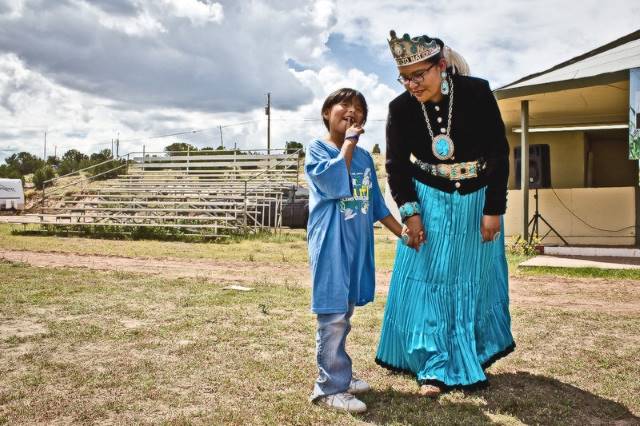What is a Native American Reservation Easy Definition
 Low qualities of life exist in developing countries as well as developed countries, including the United States. Within the 326 Native American reservations in the U.S., Indigenous peoples experience unequal life conditions. Those on reservations face discrimination, violence, poverty and lack of access to education. Here are five facts about the Native American population and reservations.
Low qualities of life exist in developing countries as well as developed countries, including the United States. Within the 326 Native American reservations in the U.S., Indigenous peoples experience unequal life conditions. Those on reservations face discrimination, violence, poverty and lack of access to education. Here are five facts about the Native American population and reservations.
5 Facts About Native Americans and Life on the Reservations
- Native Americans are the most impoverished ethnic group in the United States. According to a study done by Northwestern University, one-third of Native Americans live in poverty. The population has a median income of $23,000 per year and 20% of households earn less than $5,000 a year. Due to the oppression of Indigenous peoples, reservations cannot provide adequate economic opportunity. As a result, a majority of adults are unemployed. Standing Rock Reservation in North Dakota has better numbers than most reservations — 43.2% of the population lives under the poverty line. However, this rate is nearly three times the national average.
- Native Americans have the highest risk for health complications. Across the board, Native American health is disproportionately worse than other racial groups in the United States. This population is 177% more likely to die of diabetes and 500% more likely to die from tuberculosis. Native Americans also have a 60% higher infant mortality rate when compared to Caucasians. Most Native American reservations rely on the Indian Health Service, a severely underfunded federal program that can only provide for approximately 60% of the needs of the insured. That does not account for a majority of those on the reservations. Only about 36% of Native Americans have private health care and one-third of the non-elderly remain uninsured.
- Native Americans, especially women, are frequently victims of violence. A study from the National Institute of Justice concluded that more than 84% of American Indian and Native Alaskan women have experienced violence in their lifetimes. These women are more likely to be victims of interracial perpetrators and are significantly more likely to suffer at the hands of intimate partners. The numbers are similarly high for men of this population. More than 80% of men admit to experiencing violence in their lifetimes. Most victims report feeling the need to reach out to legal services, but many severely lack the tools to get the help they need. A few law practicing organizations have dedicated their existence to ensuring Native American voices are heard in the legal world. Native American Rights Fund (NARF), for example, is a nonprofit organization that uses legal action to ensure the rights of Native Americans are upheld. Since its inception in 1970, NARF has helped tens of thousands of Native Americans from more than 250 tribes all over the country.
- Native students hold the highest national dropout rate. Conditions on reservations leave schools severely underfunded and many children are unable to attend. This delay in education leaves early childhood skills undeveloped. According to Native Hope, "Simple skills that many 5-year-olds possess like holding a crayon, looking at a book and counting to 10 have not been developed." Inadequate education is highly reflective of Native American graduation rates. Native students have a 30% dropout rate before graduating high school, which is twice the rate of the national average. This number is worse in universities — 75% to 93% of Native American students drop out before completing their degrees. Such disparity between Native American students and their colleagues has inspired the increase in scholarships for this community. Colorado University of Boulder, for example, offers a multitude of scholarships and campus tours specifically for those of Indigenous descent. Further, the university founded the CU Upward Bound Program dedicated to inspiring and encouraging the success of its Native American students. Third-party scholarships also come from a multitude of organizations, such as the Native American College Fund and the Point Foundation.
- Quality of Life on Reservations is Extremely Poor. Federal programs dedicated to housing on Native American reservations are severely inadequate. Waiting lists for spaces are years long and such a wait does not guarantee adequate housing. Often, three generations of a single family live in one cramped dwelling space. The packed households frequently take in tribe members in need as well. Additionally, most residences lack adequate plumbing, cooking facilities and air conditioning.
Help for the Reservations
The condition of these Native American reservations is receiving increased attention. Some reservations are taking matters into their own hands. Native Hope is a volunteer-based organization working to address the injustices the Native American community faces. Its commitment to the tribes has not stopped during the COVID-19 pandemic. One woman from Illinois handmade more than 2,500 face masks so Indigenous children could still go to school amid COVID-19. The organization also provided 33 households with necessary groceries and personal hygiene supplies.
How to Help
Solutions to the marginalization of the Native American population have recently gained traction through the internet and social media. New and established charities alike are receiving more attention, which allows them to have stronger impacts on the Native American population.
Native American tribes have been around for hundreds of years but are only recently receiving the help they require. With continued attention and advocacy, Native Americans can one day receive the justice and equality they deserve.
– Amanda J Godfrey
Photo: Flickr
Source: https://borgenproject.org/native-american-reservations/
0 Response to "What is a Native American Reservation Easy Definition"
Postar um comentário